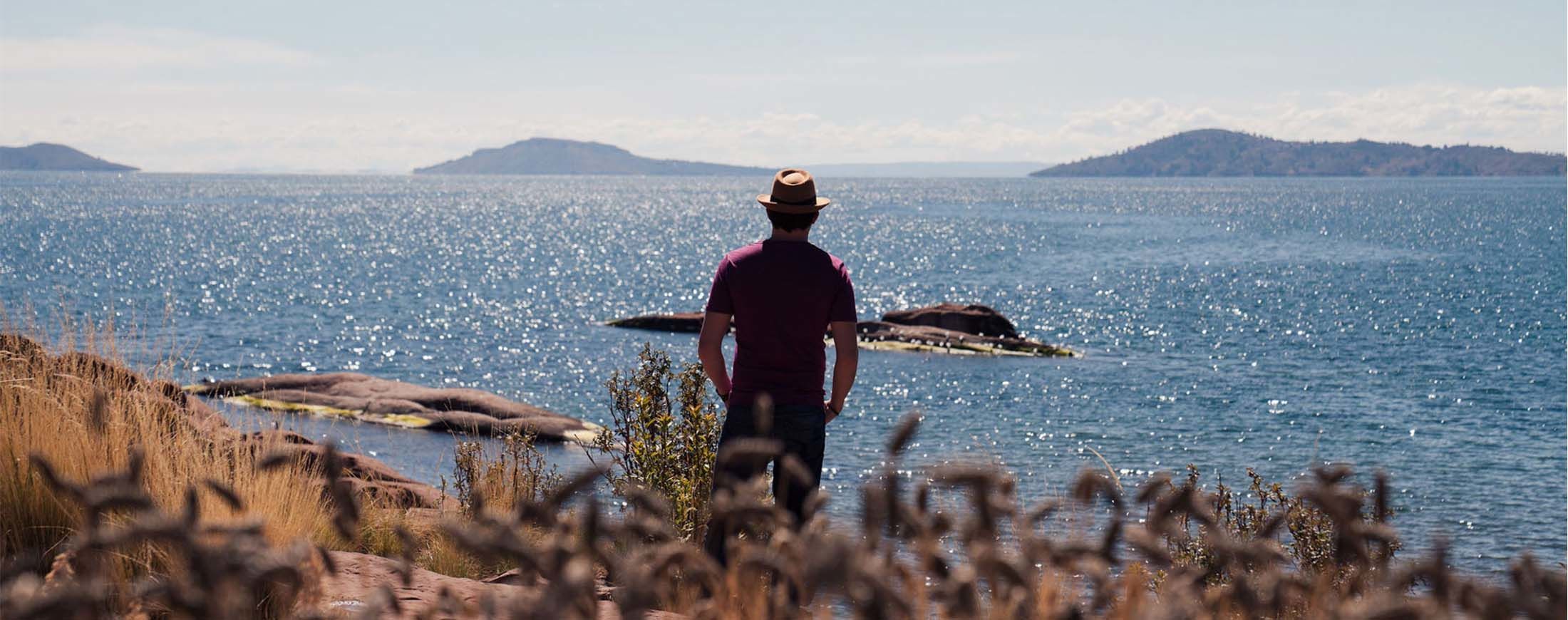Textiles and Crafts from Lake Titicaca

The geography of Peru is one of its greatest assets. With the Amazon rainforest, the never-ending coastline, and the Andes Mountains with hidden wonders like Machu Picchu, the country has some of the most diverse and incredible natural beauty in the world. Each region is responsible for carving out ways of life specific to their people, some of whom paved the way for the first civilizations in the western hemisphere. Large cities like Lima and Arequipa have developed from the amalgamation of these eclectic cultures and provide relatively easy access to the amazing array of Peru’s harder to reach places.
The Altiplano of Peru has its own distinctive identity. Lake Titicaca, set high in the Andes Mountains on the border of Peru and Bolivia, is the largest lake in South America by total volume and surface area. It sits at over 3,800 meters high, an iconic natural wonder that draws people from all over the world to see its rugged beauty. Its captivating biodiversity includes many birds, snails, and other aquatic creatures, including some endangered species. Its totora reeds have been utilized for centuries in every way, and the lake itself is responsible for cultivating several early civilizations. There are even underwater ruins dating back thousands of years. From this landscape, generations of people emerged and developed fascinating cultures unlike any other on Earth, making Lake Titicaca one of the most unique places in Peru and South America.
The traditions and practices of the region’s earliest people are still used today, including the Aymara language which has existed since before the Inca. The crafts and artisanry are revealing about how culture developed here, and how important it was for everyone both within the communities and those engaging with them. Textiles like cotton have played a vital role throughout the history of Peru, but the introduction of wool from alpaca and camelids proved to be one of the most influential. So much more than just wool and the totora, the Andean people around Lake Titicaca continue to rely on the land to practice their work today and maintain the traditions of thousands of years.
Let’s take a look at the textiles and craftwork that have made Titicaca the bastion of cultural history in southern Peru.
HISTORY
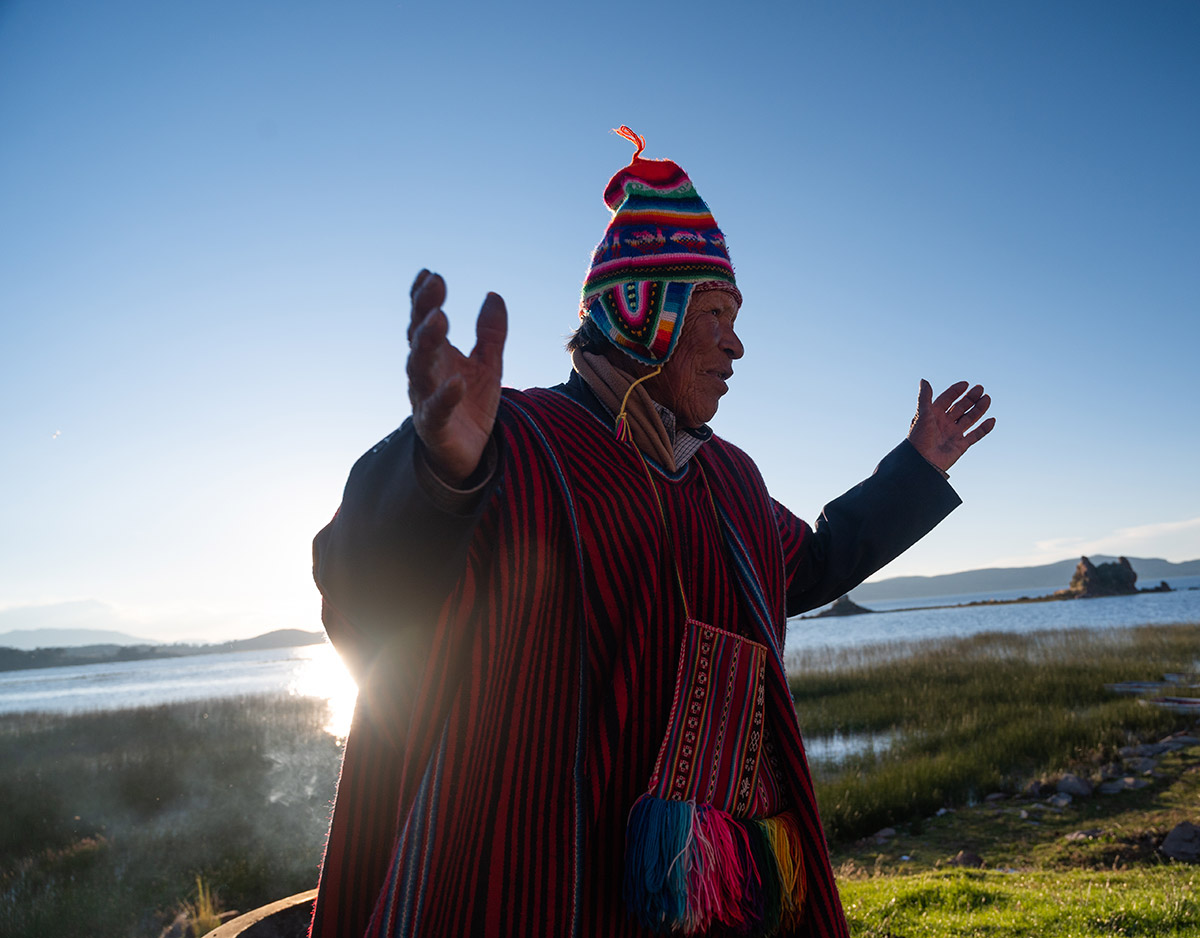
Before the Spanish and the Incas, the area around Lake Titicaca was developing an ecosystem for a long time. The lake itself is roughly three million years old, one of just a handful of ancient lakes on Earth. Though its high altitude and inland location made it perhaps more difficult to initially traverse, it served as an incubator of some of the most profound early civilizations of the Andes. The Puraka arrived around 200 BCE, creating what is believed to be a peaceful agricultural society. Some of the earliest representations of craftwork in the region began at this time, including woven baskets and mats.
They were followed in the current era by the Tiwanaku. As the Huari were spread along the coast and into central Peru, the Tiwanaku were centered at Lake Titicaca and prominent throughout the southern region and into present-day Bolivia and Chile. Ruins and artifacts – and even a road – have been discovered at the bottom of the lake dating back to this period. This indicates crafts incorporating animals (shells) and gold (a tubular foil item) were part of their religious ceremonies.
Other significant pre-Incan communities arose around the Altiplano, notably the Aymara and Quechua. Their language and lifestyle have persevered to today, even after being conquered by the Inca. The Aymara are responsible for the technical achievements of spinning and weaving and building the legacy of textile and craft work that is renowned in the world today. These pieces were used in rituals, religious ceremonies, and for marriage dowries. The abundance of alpaca, vicuña, and llama allowed extensive and intricate techniques to flourish, and wool and camelid fur was widely used throughout the Andes, including Lake Titicaca, Arequipa, and the Colca Canyon. The Uro-Aymara peoples are most closely associated with wool weaving in and around the lake.
When the Inca Empire rose to power from the 12th and 13th centuries to the 15th century, they adapted and spread many of these intricate crafts into their daily life, folklore, and trade. They were heavily influenced by Lake Titicaca, believing that their civilization rose from its waters. Their origin story states that the sun (Inti) sent his children north from the lake to find the first Incan city (Cusco) and create the empire. The Inca incorporated the graphic textile artisanry into their society; textiles were as important, if not more, than other typical items like ceramics and metals. Upper-class Incan families would use cumbi, which was a much finer fabric for their garments and ahuascas, while camelid wool and cotton were used for commoners. Men and women both would wear unkhus, headdresses, and capes for various purposes.
For the people of the Uros Islands, they created their land from the totora reeds around Lake Titicaca. The Uros were originally a fishing society on the shores of Lake Titicaca. Fleeing subjugation and aggression from the Incas, the Uros created these mobile islands to quickly escape attacks from their conquerors. The islands are completely made of the reeds and can be pushed away from the shore – and danger. Being away from the mainland allowed them to maintain their cultural identity. While they have integrated similar weaving practices of the other communities into their own products, they utilize the reeds for their own jewelry, garments, and accessories. Their boats and furniture are made using the totoras, depicting intricate designs of animals and other cultural icons.
TAQUILE
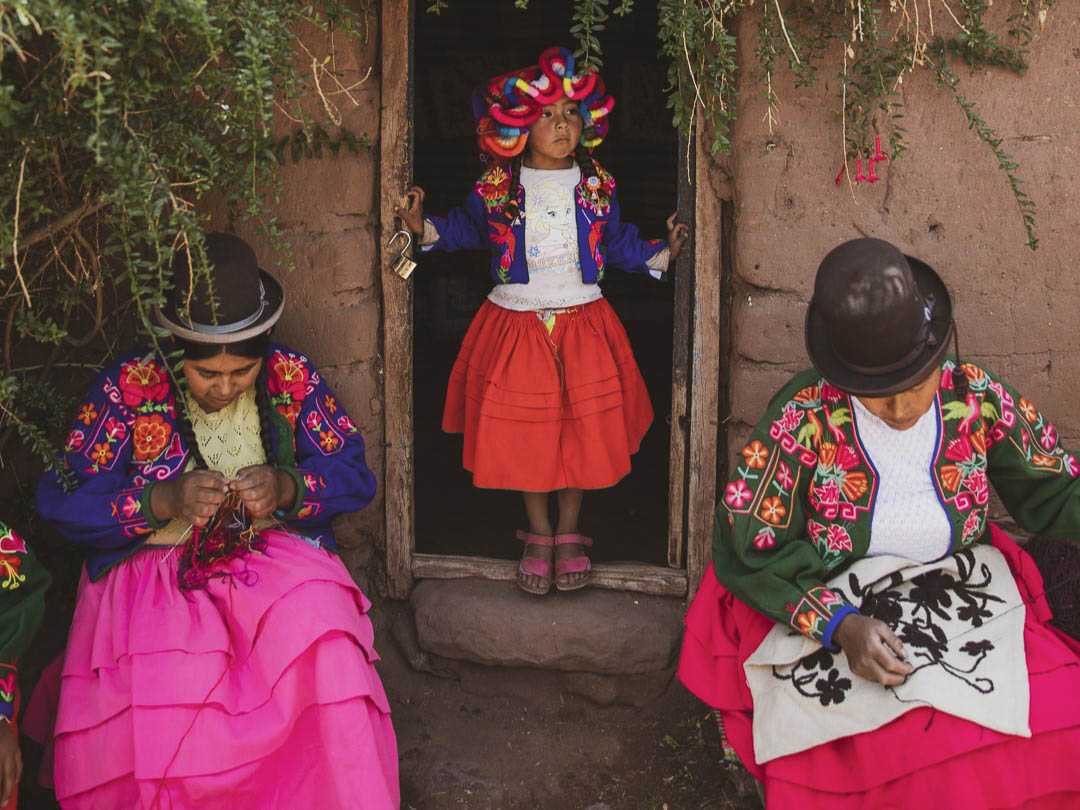
Few places or cultures are known for such outstanding craftsmanship like the people of Taquile. This is so true that the textiles produced here are recognized and protected as a UNESCO Masterpiece of the Oral and Intangible Heritage of Humanity. Passed down from generations of craft making, men, women, and children all participate in the practice. Historically, alpaca fur was obtained through trade from the surrounding herders of the Altiplano. While synthetic fabrics are now readily available, garments and accessories are still made with the traditional material and practices.
Spinning and preparing the wool is learned early on, sometimes before children turn four. The formative years are spent mastering the basic techniques that will one day lead them onto the complex and sought-after items that are often marketed around the world. By the time a child turns 12, they can begin the transition to more complicated garments. A specialized school has been created to ensure the survival of the art.
In this society, men focus on clothing like light vests, jackets, and chullos – hats with ear coverings. The chullos convey information about the wearer and can even identify who is single and who is married. Using a colonial-era loom, powered via pedal, they can weave together elegant and expressive stories for a variety of garments and occasions. With a keen eye on integrating function into the pieces, the clothes are high quality and one-of-a-kind.
The women on Taquile use a pampa awana, which is essentially a horizontal loom. With this tool, they create blankets, bags, and wide belts – llicllas, chuspas, and chumpis, respectively. The chumpi is particularly fascinating; the wide belt and waist-covering garment can depict important moments in the creator’s life, which is subjective to the weaver. This can include personal moments as well as general information to and from the community. This sacred art is how oral traditions are passed down into tangible pieces, and one more reason the UNESCO Intangible Heritage of Humanity designation has been bestowed on Taquile.
The vibrant colors are another feature of the process, which requires cleaning and preparing the wool. Pigmentation binds well to wool, improving the color quality and allowing the fabric to last longer. Similar to the areas around Arequipa, the Colca Valley, and southern Peru, producing colors relies on plants and animals in the country. Mollusks, cochineal, and vegetation are used to get a wide variety of lively colors. Some examples are q’olle flowers for yellow, tara pods and collpa for blue, and ch’illca leaves for green. Red could be one of the most important colors to the people on Taquile.
UROS ISLANDS
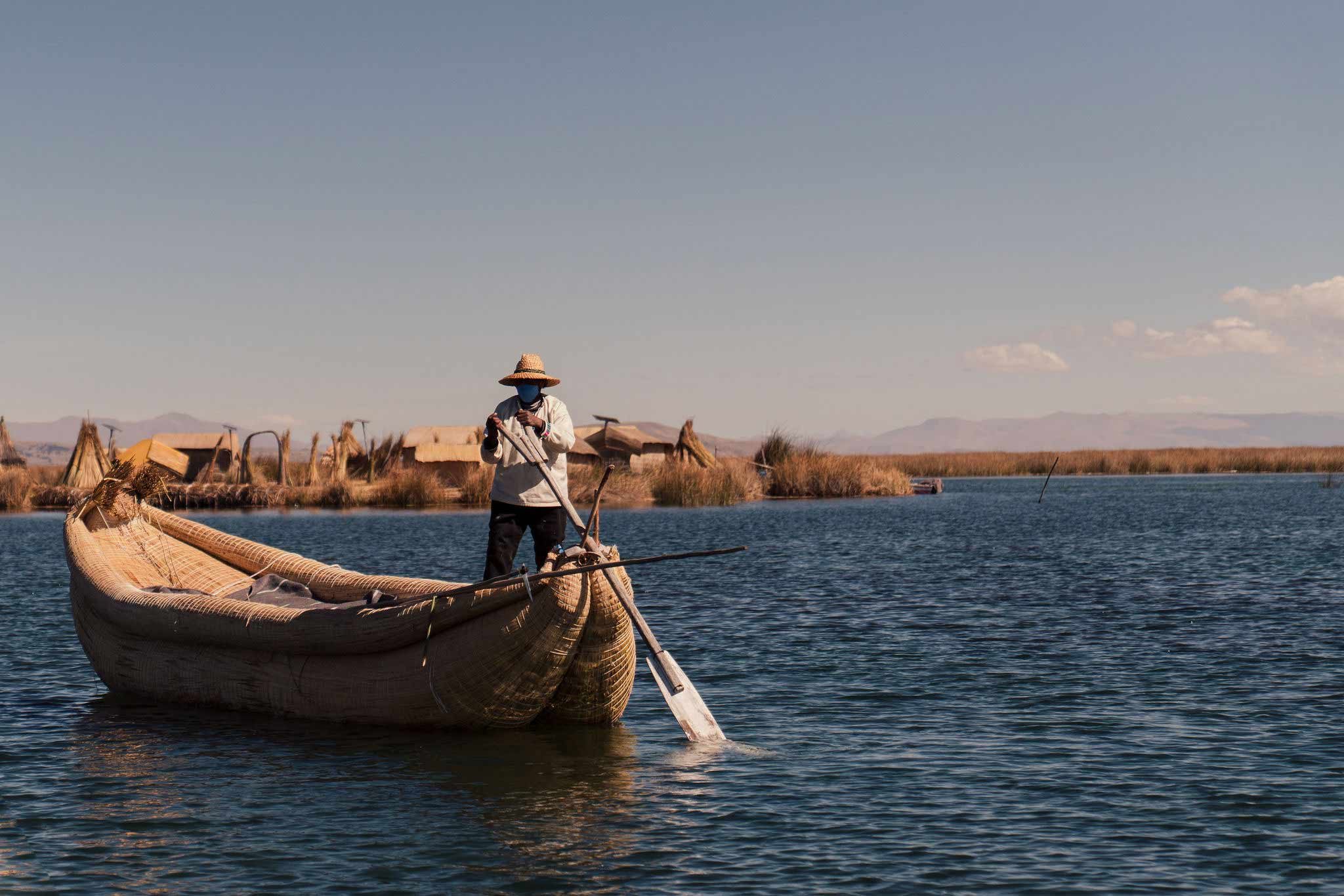
Similar to Taquile, the Uros Islands have comparable textile practices. They have a stronger reliance on the totora reeds found around the shores of Lake Titicaca. Located just offshore of Puno, the islands themselves are made of these reeds, and they sustain nearly all the community’s way of life. Buoyant and flexible, harvesting the reeds initially allowed the Uros to build their homes, and now they are part of the garments, textiles, and crafts made on the islands. Models of the seafaring boats are sold as souvenirs, as are mobiles and dioramas. People even eat and chew on the totoras for certain nutritional benefits and dental care.
The process of keeping the islands afloat is not an easy one, as rotting reeds need to be replaced frequently – every 15 to 20 days. Harvesting the reeds requires labor using sharp tools like scythes, and time is also needed to dry the reeds for their functionality. For buoyancy, like the reeds in boats and the structural component of the islands, one to four weeks of drying is necessary.
WHERE TO BUY
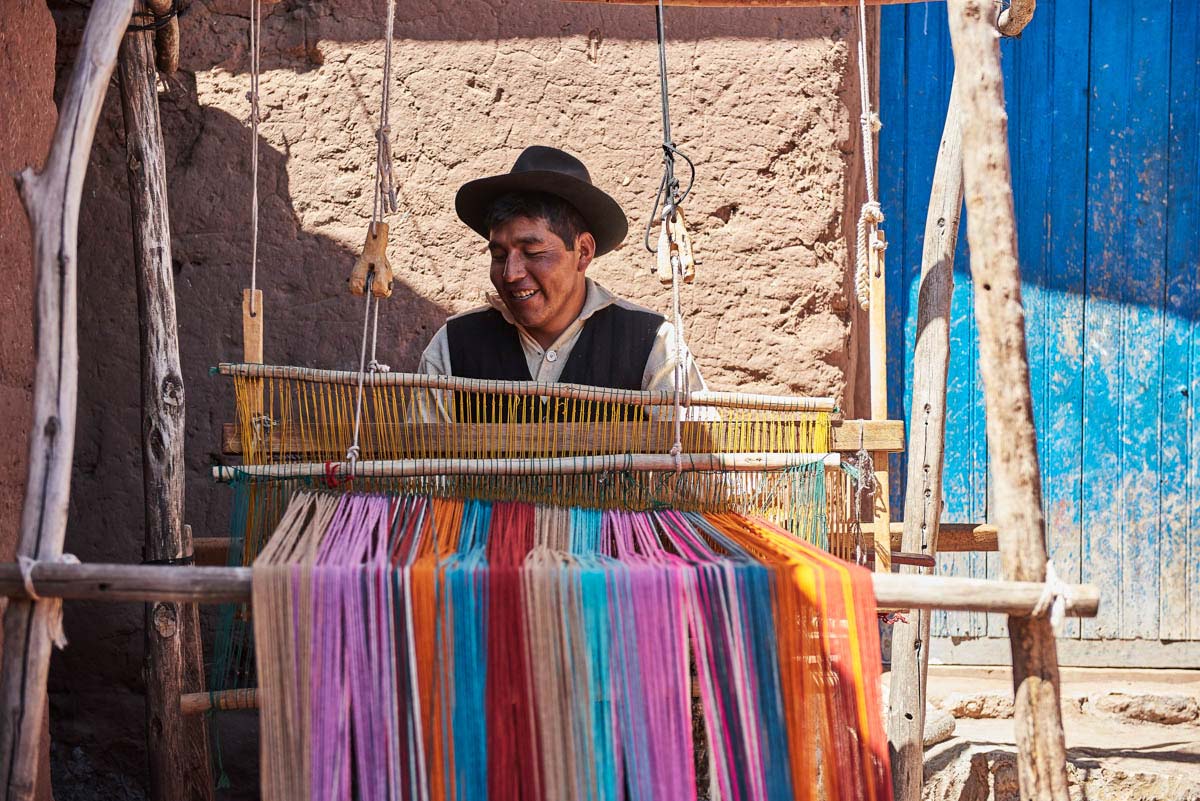
The best place to buy the crafts of Taquile, the Uros Islands, and Lake Titicaca is at the source. There are ferries and boats that travel to the islands daily, and the communities rely on tourism to sustain their traditional practices. From Titilaka, an experiential and sustainable lodge in the heart of the lake, individual tours are arranged with private boats to meet the local craftsmen in a personal setting. This allows a more intimate experience with the incredible weavers and reed raftsmen, and a chance to learn about their heritage and traditions one-on-one. It is a great chance to purchase their products as well.
Though modern advancements in care and lifestyle may have come to the island, the ability to share the stories and traditions is one of the most important ways to translate their lifestyle into a living. Bartering with the locals is a great way to experience life on Lake Titicaca and can provide insight into the trade with offshore herders that has taken place in southern Peru for thousands of years.
If you are unable to make the trip to Taquile or the floating islands, you can find woven crafts in upscale shops, stores, and markets around Peru. If you are in Arequipa, consider staying at the UNESCO-protected parador CIRQA, where a private culture trip can be tailored for you to see handiwork for purchase. For those in Lima, Atemporal – the casa housed in one of Miraflores’ traditional 1940s mansions – offers the same option to visit some of the city’s most chic and authentic craft stores just a short walk away. Many shops in both cities are dedicated to assisting local artisans, and may even give back revenue to them and include their name on their pieces.
THE ANDEAN EXPERIENCE
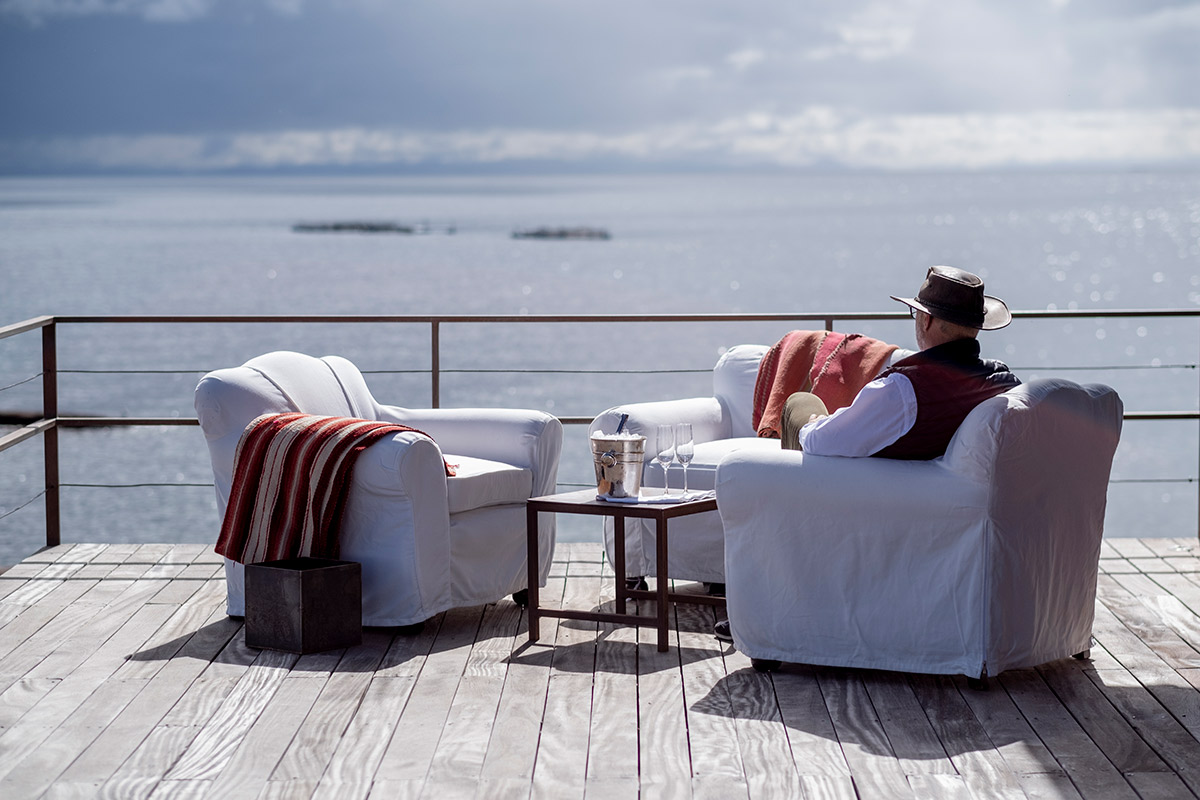
We have made a point of sharing experiences with the traditions and cultures of Peru, and Andean Experience is part of the community at Lake Titicaca. Our sustainable and relaxing lodge, Titilaka, is set on a private peninsula on the lake. With views in every single direction, we spend morning, noon, and night cultivating the right trip for visitors to experience our amazing culture. Our contemporary rooms meet perfectly at the intersection of tradition and modernity, with charming fixtures unlike any other on the lake.
Not only does the property feature local artisanry from the surrounding islands, including Taquile and the Uros, but our staff includes locals who have known Lake Titicaca for generations. With unique day trips that allow you to personally meet reed craftsmen and master weavers, you can see first-hand how the cradle of Andean civilization lives today. We are here to help craft your trip every step of the way.
For longer excursions, we can take you with host families on the islands for a more immersive experience on Lake Titicaca. Whether you want to dance in the streets of Puno for the Virgen de la Candelaria or simply stargaze and birdwatch in the natural beauty of Titicaca, we can curate the most exciting and relaxing tour tailored to your needs. We are ready to share our expertise and service to make your experience in the Andes one that you will never forget.
Lake Titicaca has forever been one of the most important parts of Peru, the Andes, and South America. Its role in early civilizations has been cemented in the folklore and tradition that continues today, and we at Andean Experience are humbled and grateful to be included in its story. We are excited to share the customs of our home with you, providing any service that will enrich your experience with the natural beauty of Lake Titicaca. Let us take care of you as you learn about and appreciate the best of Peruvian culture.



